What makes travel so appealing? New scenery, total rest and relaxation, delicious food, and shopping top many lists. When they are coupled with finding something unfamiliar in the familiar, the pleasure is doubled; a new meaning is discovered.
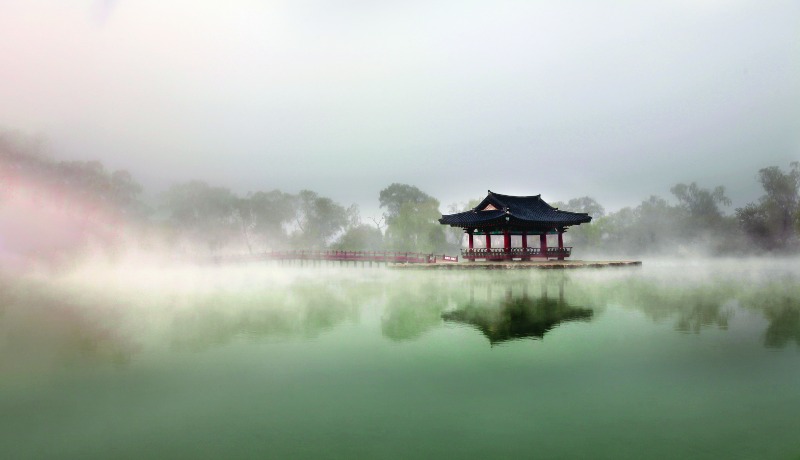
ⓒ BUYEO-GUN
Many people think of Buyeo as a place with a sorrowful history. Though the city had a brilliant, flourishing culture, it is rather known for being the last capital of the Baekje Kingdom. Today, the charm of the fallen state saturates Buyeo. Finding its real treasures is easier than expected; they lie beneath familiar, everyday sights.
WINDOW TO THE WORLD
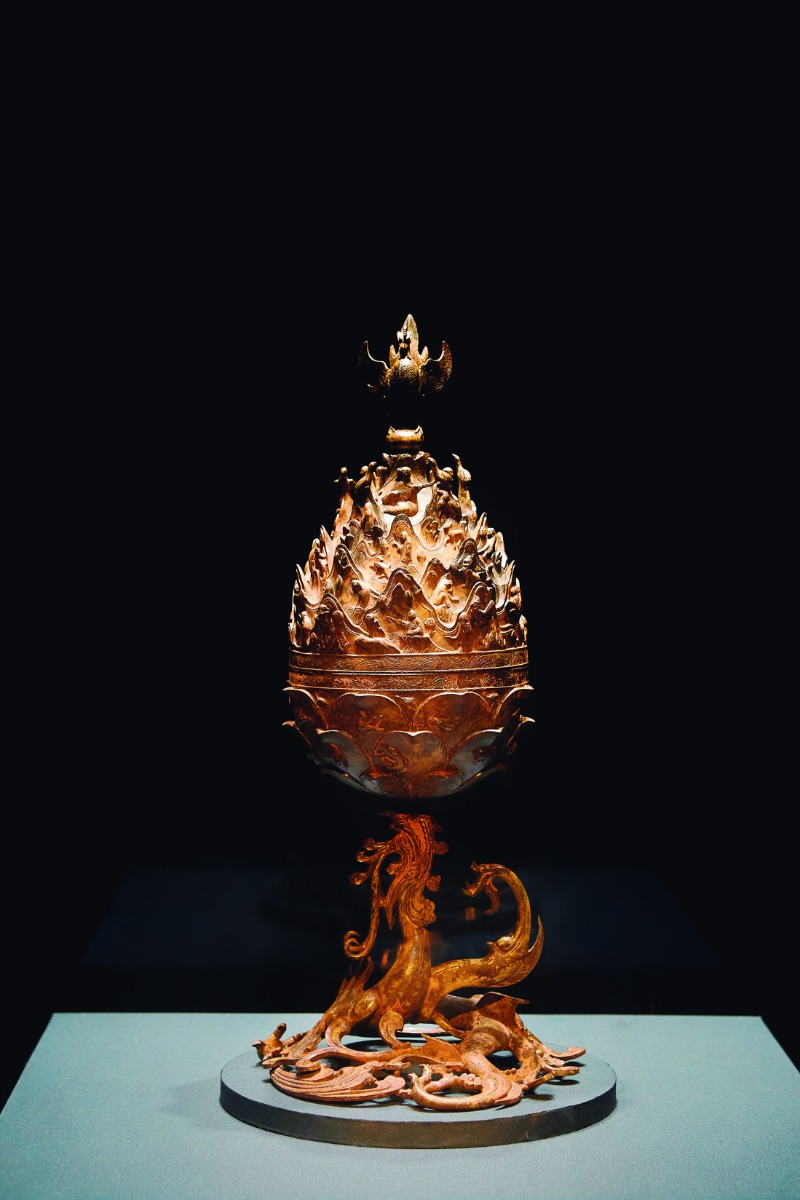
The nearly 12-kilogram Gilt-bronze Incense Burner of Baekje is designated as National Treasure No. 287. Excavated in 1993 from an ancient tomb, it is kept at the Buyeo National Museum.
The Geum River flows for 400 kilometers, making it the third-longest river in Korea. It runs through the center of Buyeo, where residents call it the Baengma River — “the longest river in Baekje.” The name refers to the 16-km section near the Buso Mountain Fortress. Until the late Joseon Dynasty, vessels of all sizes plied the waterway, including ships that traveled 70 kilometers upstream from the Yellow Sea. Their gateway was the Gudeurae ferry landing, between the river and the fortress. Today, an estuary weir restricts traffic to only ferries.
Baekje vacillated between being a rival and an ally with its neighboring states, Goguryeo and Silla, and it engaged China and Japan through maritime trade. The strategy led to a flourishing economy and developed culture, the pillars of Baekje’s survival for almost seven centuries, from 18 BCE to 660 CE. In the process, the name of the ferry landing, which originated from Kudara, the Japanese name for Baekje, meaning “the homeland” or “big nation,” became synonymous with the kingdom of Baekje. The name “Gudeurae” is rarely used in Korea today.
BEHIND THE ROCK
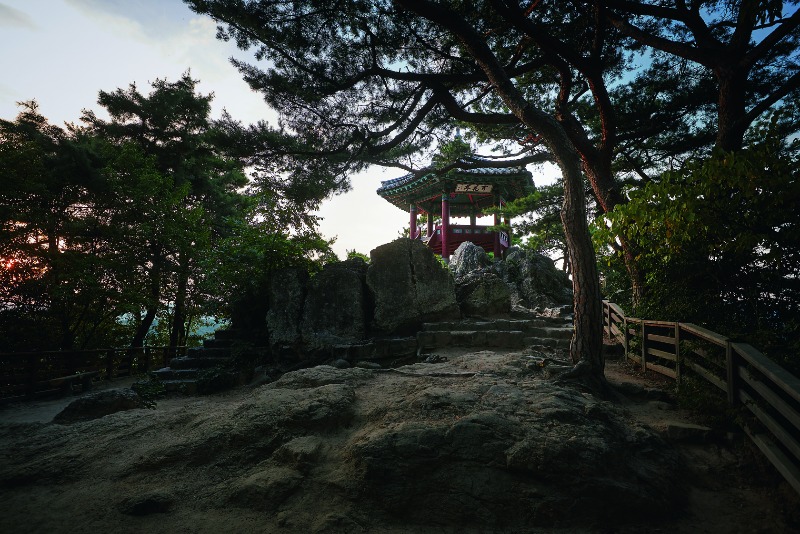
Baekhwa Pavilion is built on a cliff by the Geum River. Legend has it that 3,000 court ladies threw themselves off the cliff when Baekje fell to rival kingdoms in the seventh century.
A 30-minute ferry ride on the Baengma River takes you to the Goran Temple wharf, where the path to the Buso Mountain Fortress begins.
The path leads past Goran Temple, said to have been built in the memory of vengeful souls of Baekje, and up to Baekhwa Pavilion, which allows a spectacular view over the river below. Nakhwaam, or the Rock of Falling Flowers, is a cliff just below the pavilion. When Baekje fell to the Silla-Tang alliance under its last monarch, King Uija, legend has it that 3,000 court ladies threw themselves off the cliff, like flowers falling into the water. The name Nakhwaam was coined a thousand years after the fall of Baekje.
Though King Uija is fixed in Korean folklore as an incompetent leader and womanizer, Samguksagi (History of the Three Kingdoms), written in the 12th century during the Goryeo Dynasty, describes him in glowing terms. It says, “[The king] was magnificent and intrepid, full of mettle and resolve. […] He served his father with filial piety and loved his brothers deeply. All the people called him Haedong Jeungja.” “Haedong” refers to the Korean peninsula and “Jeungja” to Zengzi, one of the disciples of Confucius, with whom he was counted as one of the five sages of the East. According to the history book, King Uija not only had the dignity of a true monarch but also the character and learning comparable to the Confucian sages.
It seems King Uija was an eminent leader in some respects, and a capable strategist, able to seize forty Silla fortresses and isolate Silla through diplomatic means. However, he could not repel a joint invasion of Silla and Tang forces, who toppled Buyeo and took the monarch to China. Nevertheless, Baekje forces rallied under his son, King Pung, and fought the Silla-Tang alliance for three years. Facts and truth do not always agree, but the valor of the Baekje people, who fought to the end, lives on in the tragically beautiful name of Nakhwaam.
ACME OF BAEKJE CULTURE
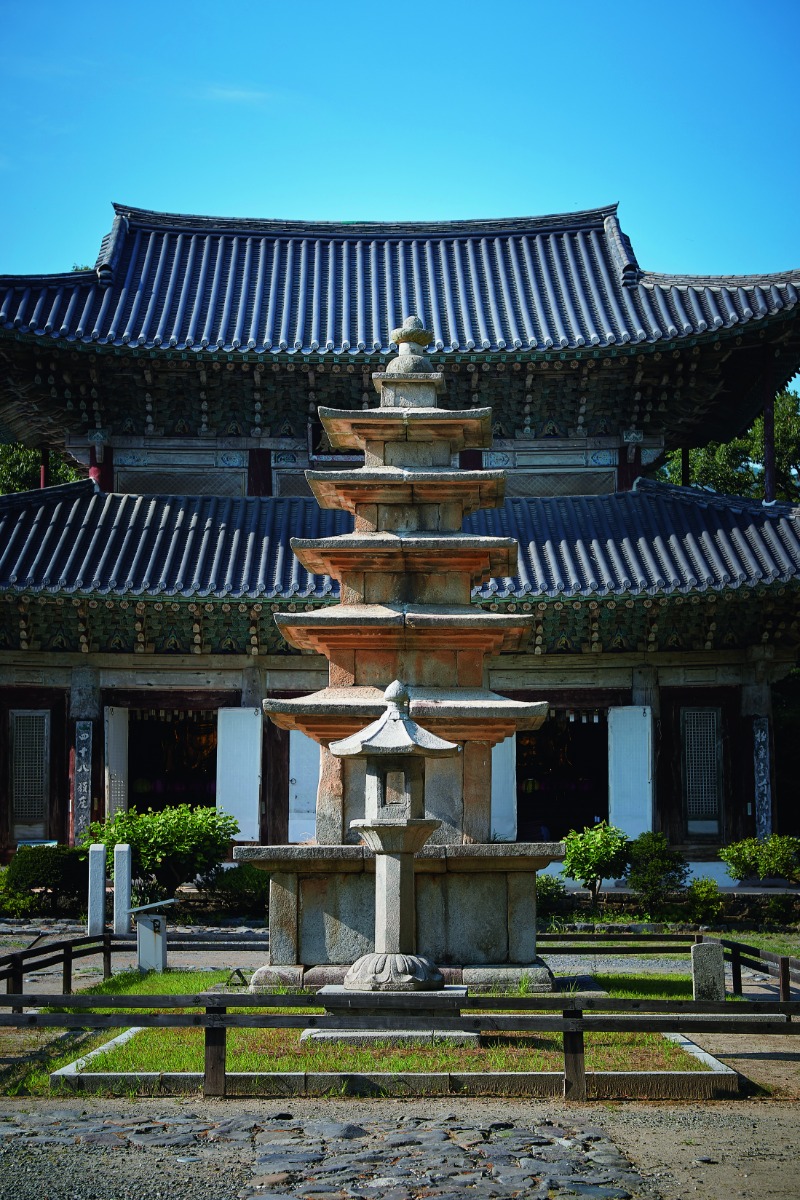
From the outside, Geungnakjeon (Hall of Paradise) at Muryang Temple appears to be a two-story structure but the interior is one expanse. A five-story stone pagoda and stone lantern stand in single file in front of the hall, symbols of Baekje’s high culture.
Where can the prosperity of Baekje be seen? Walking past Saja Pavilion, sitting on the highest point of the Buso Mountain Fortress, the site of the military storehouse and barracks, and Samchung Shrine, dedicated to the last three loyal officials of Baekje — Gyebaek (?–660), Seongchung (?–656), and Heungsu (dates unknown) — the fortress is left behind. Not far away is the Buyeo National Museum.
The scale and importance of the artifacts in the collection belie the museum’s modest size. Thirty years ago, around 4 p.m. in the afternoon on December 12, 1993, when the sun was slowly sinking, excavation of the tumuli cluster in Neungsan-ri, Buyeo, was wrapping up. At that moment, in a mud pit some 1.20 meters deep, there appeared an outsized incense burner — over 60 cm high and weighing almost 12 kg. Barely three years later, the Gilt-bronze Incense Burner of Baekje was named a national treasure in recognition of its artistic value and historical significance.
Initially, some wondered if it was not a Chinese item. Stylistically, it basically resembled Chinese incense burners, and while Baekje was a Buddhist nation, the incense burner had a strongly Taoist feel. There is no doubt, however, that it was made in Baekje. It was discovered at a blacksmith’s site adjacent the Neungsan-ri tumuli. And unlike Chinese incense burners, the Baekje burner was made with gilt-bronze and topped with a figurine playing the geomungo, a zither native to Korea.
Besides the geomungo, some other lesser known musical instruments are featured on the lid. They include the jongjeok (vertical f lute) and wanham (plucked lute similar to a guitar), a jar-shaped drum, whose origin can be found in Southeast Asia, and the baeso (similar to pan pipes), a wind instrument of the northern nomadic peoples.
This combination of instruments reflects the fusion of foreign elements, such as the incense burning culture of the Arabic and Western regions and the incense burners of China, with Korean traditional culture, Buddhist philosophy, and belief in the Taoist immortals. The presence of these motifs on the lid attests to Baekje’s skill at building on its strengths and overcoming its limitations through international exchange. The artistry and originality of the Baekje incense burner hints at the driving force behind Baekje’s cultural and economic development.
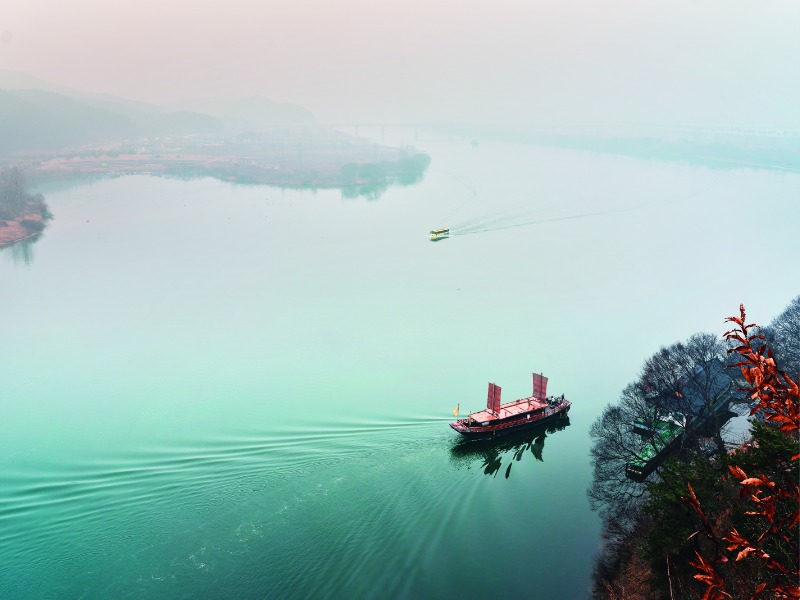
Baengma River’s name means “the longest river in Baekje.” Tourists can take in the sights of Buyeo by cruising the river on a ferry, traditional sailboat, or Korea’s first amphibious bus.
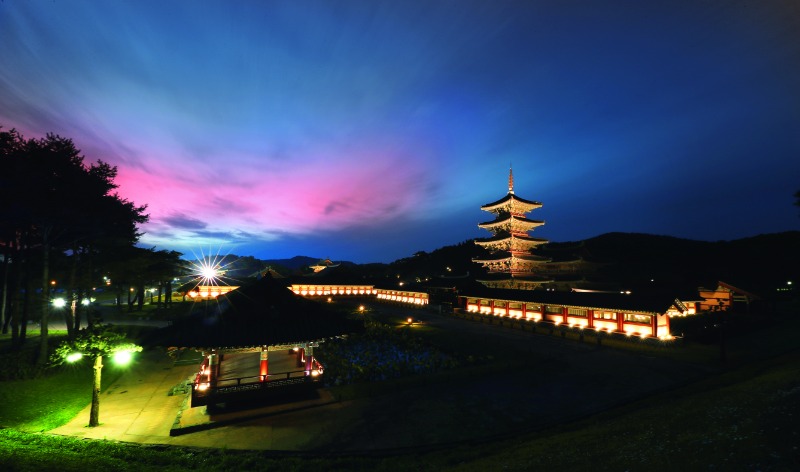
Baekje Cultural Land is a historical theme park featuring a reproduction of Baekje’s Sabi Palace. It gives an overview of Baekje’s culture and history through the living spaces of Sabi Palace and Neung Temple.
© BUYEO-GUN
IN MEMORY OF A POET
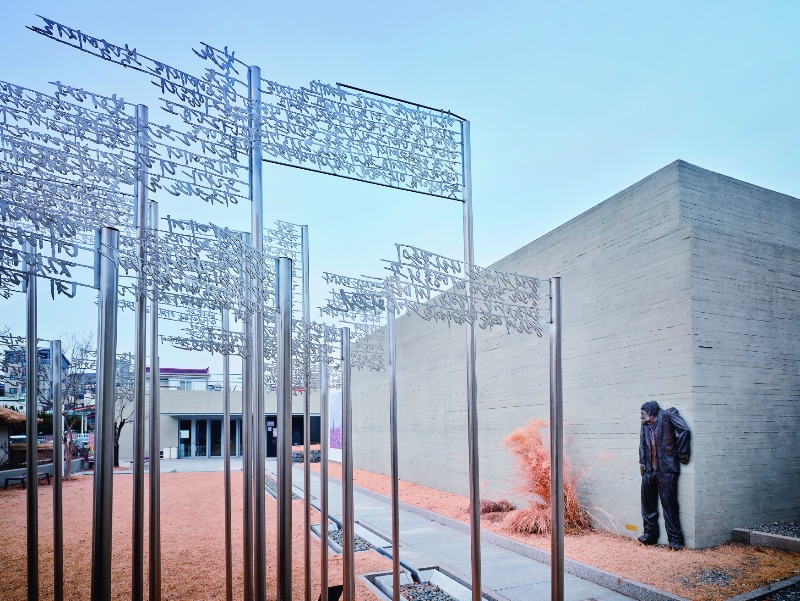
Shin Dong-yeop House and Museum researches the life and works of the poet and oversees the Shin Dong-yeop Literary Award, which has been bestowed on writers of all genres.
Buyeo is not only important as the capital of Baekje more than a thousand years ago. Some 800 meters to the northwest of the Buyeo National Museum is the birthplace of the poet Shin Dong-yeop (1930–1969) and a museum built in his honor.
Although only active over the last ten years of his life, Shin left a definitive mark on the Korean literature scene before he died. Totally committing himself to the April 19 Revolution in 1960, the country’s first democratization movement, he left behind works that helped motivate succeeding writers to seek alternatives and conquer dictatorship. For example, he discussed the unification of South and North Korea, while criticizing the authoritarianism and opportunism that pervaded Korean society and battling for democracy.
The poet’s legacy continues through the annual Shin Dong-yeop Literary Award. His family and the publishing company Changbi established the award in 1982, despite the oppression of the then dictatorial government. Unlike most literary awards, writers of any genre are considered. The goal is to encourage and support writers carrying on the spirit of the late poet.
Shin Dong-yeop’s spirit as a poet, his belief that literature should contribute to making both individuals and society better, pervade the Shin Dong-yeop House and Museum. Indeed, the museum is like a eulogy to the poet, who overcame the limitations of a literary circle caught up in aestheticism and showed what it means to be an artist who participates in society.
LAIDBACK VIBES
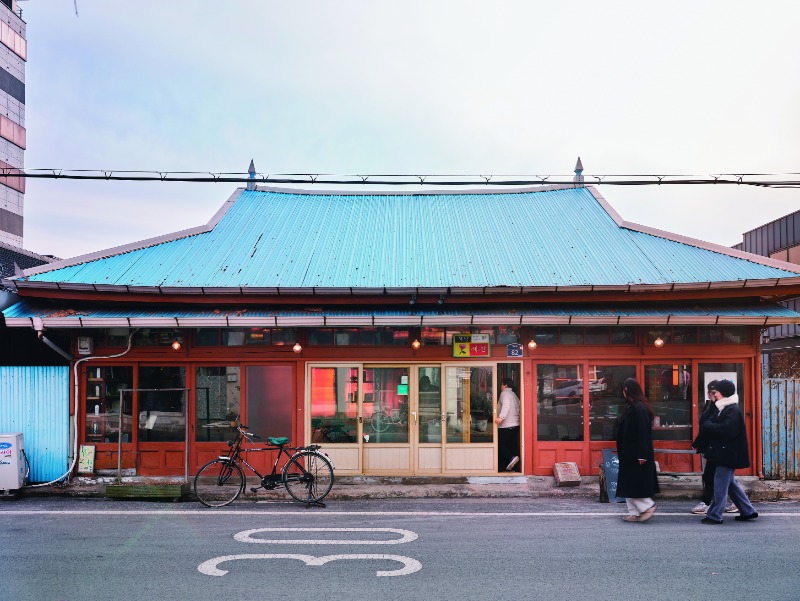
Jaon-gil, near the Gyuam ferry landing, is lined with bookstores, craft workshops, cafés, and restaurants. The name reflects the goal of bringing life and warmth back to the area, which was once a distribution hub.
A good place to close a trip to Buyeo is Jaon-gil, or Jaon Road, near the Gyuam ferry landing across the Baengma River. Gyuam was a thriving village when shipping was active on the river, but fell into decline with increasing urbanization, leaving many houses empty. The name Jaon, which means “to become warm on one/its own,” reflects the locals’ will to bring people back to the village.
The strip of road is lined with small bookstores run by art and culture lovers carrying on the legacy of Shin Dong-yeop, craft workshops offering all kinds of items, and restaurants and cafés serving up dishes made with local ingredients. As you walk along Jaon-gil, taking in the easygoing atmosphere and gentle, relaxing scenery of Buyeo, the brilliance and glory of the Baekje Kingdom makes itself felt, and brings home the meaning of a change in perspective that makes familiar things look new.
Kwon Ki-bong Writer
Lee Min-hee Photographer